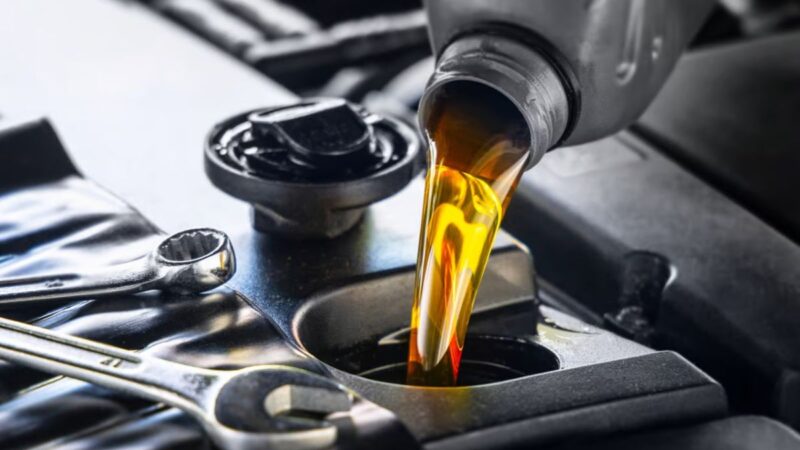The idea of filling car engine lubricant oil into motorcycle engines is not new. Sometimes when we send our cars for service, the workshop returns the excess new lubricant oil in a bottle, and we think that maybe it can be used for motorcycles at home.
The grade of the lubricating oil for both is the same, for example, our car uses grade 10W-30 oil, and our motorcycle uses the same.
The viscosity at cold and hot temperatures (according to SAE standards) is the same, so we can pour both into the engine. Can we?
The simple answer is no.
Different tasks and functions
The main reason why it cannot be done is because of the tasks. Car and motorcycle lubricant oils have very different tasks. For cars, the lubricant oil’s task is solely to lubricate the two surfaces within the engine that come into contact, to prevent components from scratching and getting damaged.
If you notice, modern cars now use low viscosity oil. For example, the Perodua Bezza uses 0W-20 grade oil, which is considered thin oil.
The reason is that modern cars are tuned to save fuel and reduce air pollution. Thin oil makes it easier for components to move, and the engine temperature is not as high as high-performance cars. Therefore, it is fine for daily driving. The oil will not become too hot or thin even with its low viscosity.
Different oils for different systems
Furthermore, cars have other oils, such as transmission or gearbox oil, which are very different from engine oil. In addition, there is also a different fluid in the cooling system, namely coolant.
Different systems in cars will use specific different fluids. Engine lubricant oil cannot be used in the transmission, and vice versa.
Oil is more critical for motorcycles
For motorcycles, especially those with small cc, the engine oil is designed for more than one task. This oil lubricates and protects the engine, is also used in the transmission, and to cool the engine.
Motorcycles also usually rev at higher levels. The engine is hotter, so it needs a higher grade. In short, motorcycle lubricant oil is more critical, and the task is tougher.
The engine size is also smaller, so the space for oil passage is narrower. That’s why you’ll notice that the requirements or qualifications for car and motorcycle engine lubricant oils are quite different. Because of the specific functions and tasks, the formulas are also different.
For example, even though the viscosity is the same, car engine lubricant oil contains friction modifiers. If poured into a motorcycle engine, the clutch can slip, causing inefficient driving. Worse still, it can damage motorcycle transmission components.
Now you understand why car and motorcycle lubricant oils are different and why they cannot be poured around casually. Let’s not risk our engines just to save a little.
The easiest thing to do is to refer to our car or motorcycle manual. Do you still have it? The manual provides the most accurate guidance for our machines.
For motorcycles, there are usually more specific specifications that are not found in cars. For example, 4T for four-stroke engines, JASO MA for wet clutch systems, or JASO MB for scooters.
We hope this article is helpful! If you are discussing this topic with friends at a coffee shop, share this article for better understanding.
